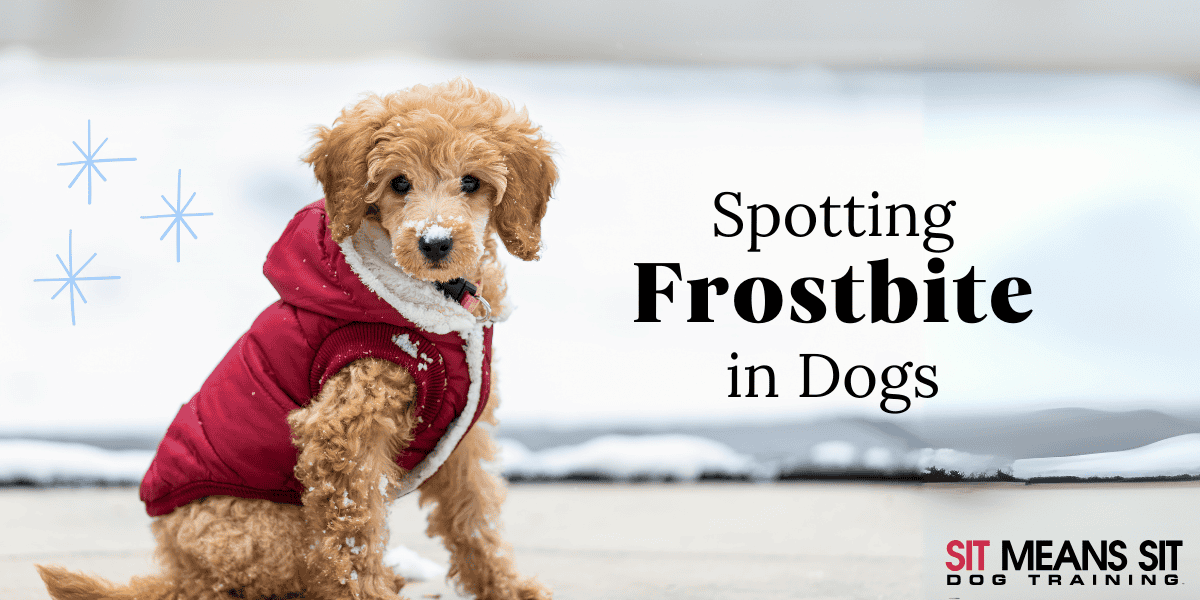As the winter months roll in, it’s important to remember that our furry friends are just as vulnerable to the cold as we are. One of the more serious risks for dogs in cold weather is frostbite, which can cause severe damage to your dog’s skin and tissue. Since our furry friends can’t tell us when they’re cold, knowing what signs to look for is essential. Here are some common causes of frostbite in dogs and how to spot them.
What is Frostbite?
Frostbite occurs when the skin and tissue freeze due to prolonged exposure to extremely cold temperatures. Freezing temperatures cause blood vessels to constrict, leading to reduced blood flow and potential tissue damage. Dogs are more vulnerable to frostbite in areas with less fur or fat insulation, such as their ears, paws, tails, and noses. Frostbite can lead to severe damage when left untreated, which is why it’s important to protect your furry friend from the cold.
Causes of Frostbite in Dogs
Frostbite is caused by prolonged exposure to temperatures below freezing. It can occur while dogs are outside in snowy, icy, or sub-zero conditions without adequate protection, so it’s important to know how cold is too cold for dogs. Your furry friend might be at a greater risk for frostbite if one of these factors applies to them:
- Small size or low muscle mass
- Illness or old age
- Short fur
- Poor circulation
- Wet conditions, such as damp bedding or fur
- Medical conditions that affect blood flow
Signs Fido Has Frostbite
It’s essential to act quickly if you suspect your dog has frostbite. Here are the key signs to watch for:
- Blue Skin: One of the earliest signs of frostbite is a blueish tint to the skin. In dogs, this is especially prominent in the paws, ears, or tail. The blue color is caused by a lack of oxygen in the blood due to poor circulation.
- Pain and Swelling: If your dog seems to be in pain, especially when you touch their paws, ears, or tail, it could be an indication of frostbite. You might also notice swelling in the affected areas, which occurs when your dog’s body reacts to the tissue damage.
- Blisters: Blisters can form on the affected areas once the frostbite begins to thaw. These blisters appear within a few hours after exposure and range from small bumps to larger, painful blisters. If you see blisters on your dog, it’s a sign that their skin tissue is severely damaged and needs medical attention.
- Cold to the Touch: Frostbitten areas will feel cold or icy to the touch and much colder than the rest of your dog’s body. If your dog’s ears, paws, or tail feel unusually cold after being outside, it may be a sign of frostbite.
- Blackened Skin: In more severe cases of frostbite, the affected tissue may turn black. This happens because the freezing temperatures cause the tissue to die. Blackened skin is a sign of advanced frostbite and often means that some tissue has been permanently damaged. At this point, emergency veterinarian care is necessary.
If you notice any of these signs, get your dog to a warm environment and seek veterinary care immediately.
Treating Your Dog’s Frostbite
If you suspect your dog has frostbite, the best course of action is to take them to the vet immediately. Your vet may prescribe pain medication, antibiotics to prevent infection, or treatments to help the affected areas heal. To give Fido the best chance of recovery, follow these tips.
- Move to a Warm Area: Get your dog inside as quickly as possible and out of the cold. You’ll want to begin warming them up gradually.
- Warm Compresses: Gently warm the affected areas using a warm compress on your pup. Hot water or direct heat could cause additional harm, so ensure the compress is warm, not hot.
- Avoid Rubbing: Do not rub the frostbitten areas, as this could cause further damage to the frozen tissues. Instead, apply warmth and handle the area gently.
- Dry the Skin: If your dog’s fur is wet, immediately dry it with a towel. Avoid applying direct heat since excessive heat can cause burns.
- Monitor Your Dog: Follow your vet’s instructions closely. You may need to limit your dog’s movement to prevent further injury and ensure the frostbitten areas heal properly.
Understanding the causes and symptoms of frostbite will help you spot it early and give your dog the best chance of recovery. Before heading outdoors this winter, bundle Fido up in protective winter gear to keep them warm. With the proper precautions, you can keep your furry friend warm and safe this winter.
Check Out These Related Posts for More Winter Dog-Owner Tips!
Cold Weather Safety Tips for Dog Owners

